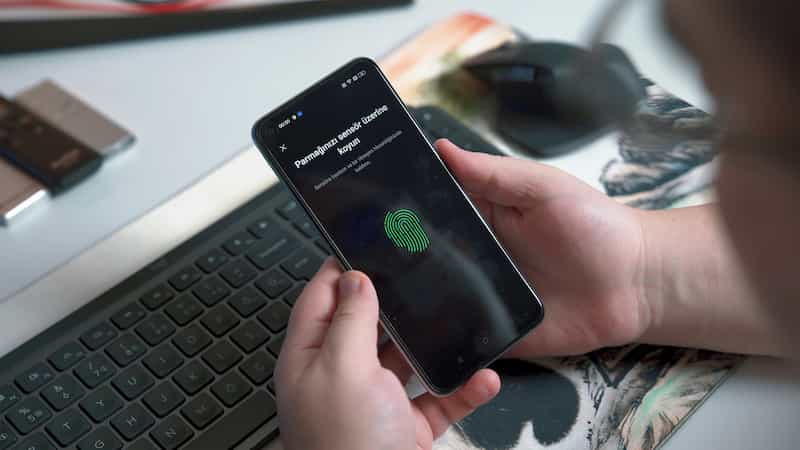In today’s digital landscape, securing sensitive information is more crucial than ever. With cyber threats on the rise, relying solely on passwords for authentication is no longer sufficient. Two-Factor Authentication (2FA) adds an extra layer of security, making it significantly more difficult for unauthorized individuals to gain access to systems and data. This article explores how to implement 2FA in a local network within a corporate environment, detailing the benefits, methods, and practical considerations for deployment.
Understanding Two-Factor Authentication
Two-Factor Authentication requires users to provide two different types of information to verify their identity. Typically, these factors include:
- Something you know: A password or PIN.
- Something you have: A physical device like a smartphone or hardware token.
- Something you are: Biometric data such as fingerprints or facial recognition.
By combining these factors, 2FA significantly enhances security. Even if one factor (like a password) is compromised, an attacker still needs access to the second factor, making unauthorized access much more challenging.
Benefits of Implementing 2FA
- Enhanced Security: Protects against password theft and brute-force attacks.
- Compliance: Helps meet regulatory requirements for data protection and privacy.
- Reduced Risk of Data Breaches: Minimizes the impact of compromised credentials.
- User Trust: Increases confidence in the security of the organization’s systems.
Methods of Implementing 2FA
1. Hardware Tokens
Hardware tokens are physical devices that generate one-time passwords (OTPs) or provide cryptographic keys for authentication.
- USB Tokens: Plugged into the computer’s USB port to authenticate.
- Smart Cards: Contain a chip that communicates with a reader to verify the user’s identity.
2. Software Tokens
Software tokens generate OTPs through applications installed on smartphones or computers. Popular apps include Google Authenticator, Microsoft Authenticator, and Authy.
3. SMS and Email Verification
One-time codes are sent via SMS or email, which users must enter in addition to their password. While convenient, this method is less secure due to potential interception of messages.
4. Biometric Authentication
Biometric methods use unique physical characteristics, such as fingerprints, facial recognition, or retina scans. This method is highly secure but requires compatible hardware.
5. Push Notifications
Push-based 2FA sends a notification to a registered device, where the user can approve or deny the login attempt. This method combines security and ease of use.
Implementing 2FA in a Local Network
1. Assessing the Environment
Before implementing 2FA, assess the current IT infrastructure, security requirements, and compliance needs. Consider the following:
- User Base: Number of users and their technical proficiency.
- Applications and Services: Systems that require 2FA, such as VPNs, internal applications, or email servers.
- Existing Authentication Methods: Current authentication mechanisms and potential integration with 2FA.
2. Choosing the Right 2FA Solution
Select a 2FA solution based on the assessment. Factors to consider include:
- Compatibility: Ensure the 2FA method is compatible with existing systems and applications.
- Usability: Choose a method that balances security and user convenience.
- Scalability: The solution should be able to grow with the organization.
- Cost: Consider the initial setup and ongoing maintenance costs.
3. Setting Up 2FA
Configuring the Authentication Server
-
Install and Configure a RADIUS Server:
- A RADIUS (Remote Authentication Dial-In User Service) server can centralize authentication and enforce 2FA policies.
- FreeRADIUS and Microsoft NPS (Network Policy Server) are popular choices.
-
Integrate with Active Directory (AD):
- If using AD for user management, integrate the RADIUS server with AD to authenticate users.
- Configure AD policies to enforce 2FA.
-
Deploy 2FA Solution:
- Install and configure the chosen 2FA solution (e.g., hardware tokens, software tokens).
- Set up the authentication flow to require 2FA upon login.
Setting Up Client Devices
-
Distribute Tokens:
- Provide hardware tokens or guide users to install software tokens on their devices.
- For SMS or email-based 2FA, ensure users register their phone numbers or email addresses.
-
User Enrollment:
- Enroll users in the 2FA system, linking their authentication factors to their accounts.
- Conduct a pilot program with a small group of users to identify and resolve potential issues.
-
Client Configuration:
- Configure client applications, VPNs, and other services to support 2FA.
- Ensure that all endpoints, including desktops, laptops, and mobile devices, are configured correctly.
4. Enforcing 2FA Policies
Define and enforce policies for 2FA usage:
- Mandatory 2FA: Require 2FA for all users, particularly for sensitive systems.
- Exemptions: Identify cases where 2FA may not be required, such as specific low-risk systems.
- Recovery Options: Establish procedures for lost or forgotten tokens, ensuring users can regain access securely.
5. Monitoring and Maintaining 2FA
-
Monitor Authentication Logs:
- Regularly review authentication logs to detect suspicious activities.
- Use Security Information and Event Management (SIEM) tools to analyze authentication events.
-
Regular Updates and Audits:
- Keep the 2FA system and related software up to date with the latest security patches.
- Conduct periodic audits to ensure compliance with security policies.
-
User Training and Support:
- Provide training and support resources to help users understand and use 2FA effectively.
- Offer help desk support for issues related to 2FA, such as token setup or account recovery.
6. Evaluating and Improving the 2FA System
Regularly evaluate the effectiveness of the 2FA implementation. Gather feedback from users and IT staff to identify areas for improvement. Consider implementing advanced 2FA methods, such as adaptive authentication, which adjusts the level of authentication required based on risk factors.
Conclusion
Implementing Two-Factor Authentication in a corporate environment enhances security by adding an additional layer of protection against unauthorized access. By carefully assessing the organization’s needs, selecting the appropriate 2FA solution, and enforcing security policies, organizations can significantly reduce the risk of data breaches and unauthorized access. Moreover, regular monitoring, updates, and user support ensure that the 2FA system remains effective and user-friendly. As cyber threats continue to evolve, adopting robust authentication measures like 2FA is an essential step toward safeguarding corporate data and systems.
